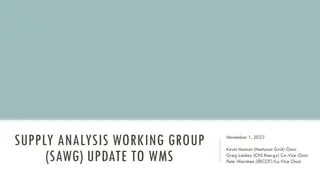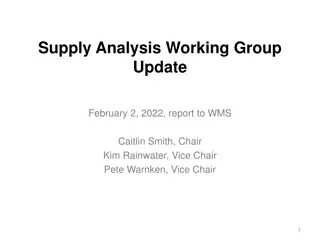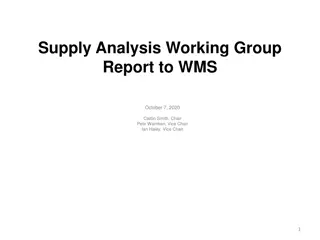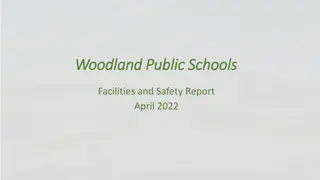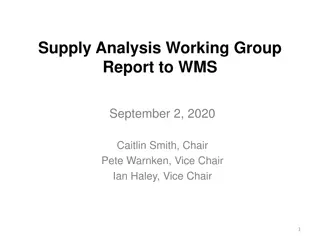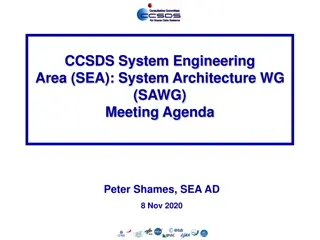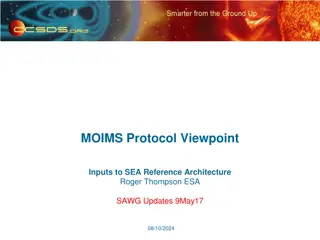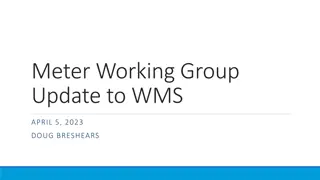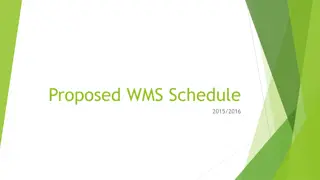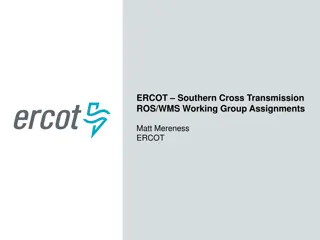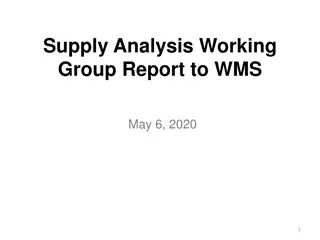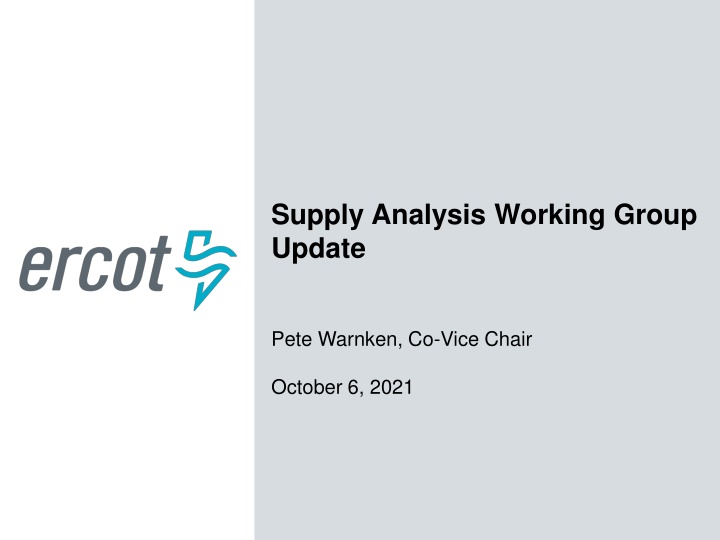
Update on Supply Analysis Working Group Meeting Highlights
Stay informed with the latest developments from the Supply Analysis Working Group meeting, including updates on severe weather scenario analysis, winter SARA release plans, probabilistic modeling, and more. Key discussions revolved around extreme weather events, gas/electric coordination efforts, transmission planning cases, and challenges in fuel supply risk assessment during severe weather conditions.
Download Presentation

Please find below an Image/Link to download the presentation.
The content on the website is provided AS IS for your information and personal use only. It may not be sold, licensed, or shared on other websites without obtaining consent from the author. If you encounter any issues during the download, it is possible that the publisher has removed the file from their server.
You are allowed to download the files provided on this website for personal or commercial use, subject to the condition that they are used lawfully. All files are the property of their respective owners.
The content on the website is provided AS IS for your information and personal use only. It may not be sold, licensed, or shared on other websites without obtaining consent from the author.
E N D
Presentation Transcript
Supply Analysis Working Group Update Pete Warnken, Co-Vice Chair October 6, 2021
Summary of 9/17 SAWG Meeting Meeting held jointly with PLWG to apprise each other of activities associated with severe weather event scenario analysis, and for PLWG to summarize ongoing discussions on severe winter weather transmission planning cases (TAC Emergency Conditions List Items 93-94) Update on Winter SARA release plans and NERC s request for an extreme winter weather event scenario for their 2021-22 Winter Reliability Assessment Update on probabilistic winter SARA development project, with a presentation on probabilistic modeling of a severe winter weather event Presentation on statistical relationship between temperature and forced outage rates for selected resource types and Weather Zones 2 PUBLIC
Presentation/Discussion Highlights National Grid provided an update on PLWG subgroup discussions on extreme cases/events, including examples of MISO s gas/electric coordination efforts, ideas for changes to SARA and CDR reports (recap of proposals introduced at a prior SAWG meeting), and proposed transmission planning cases for extreme summer and winter weather and weather-related extreme events ERCOT described the status and purpose of the weather study to support development of phase 2 of the PUCT s weatherization standards A stakeholder gave an update on electric-coordination issues; a key challenge is getting comprehensive data on fuel supply risks, and how to determine how much fuel supply would be available during severe weather events 3 PUBLIC
Presentation/Discussion Highlights ERCOT provided charts showing the temperature vs. forced outage relationship for (1) gas-fired combined-cycle units in the North Central and South Central Zones, and (2) wind units in the West Zone; relationships can be used to develop temperature-threshold-based outage scenarios for the SARA Combined-Cycle 4 PUBLIC
Presentation/Discussion Highlights Wind 5 PUBLIC
Presentation/Discussion Highlights ERCOT s plan is to release the Winter SARA report in mid- November NERC requested a risk scenario based on past severe winter weather event of each Assessment Area s choosing. This scenario would be included in NERC s Weather Reliability Assessment report. ERCOT will brief the PUCT on the scenario as well as on associated messaging in the accompanying narrative description ERCOT recommended that a scenario workshop be conducted at an appropriate time to take stock of progress in data gathering and research on scenario development, and to coordinate on efforts at scenario development that account for multiple working group needs and perspectives 6 PUBLIC
Presentation/Discussion Highlights The winter probabilistic SARA model should be ready in October A presentation was given on how the risk of outages and reduced renewables production during severe weather events (comparable to Winter Storm Uri), is being represented probabilistically in the model Thermal Forced Outage Probability Distribution for Severe Winter Storm Event (3.5% overall probability) 7 PUBLIC

